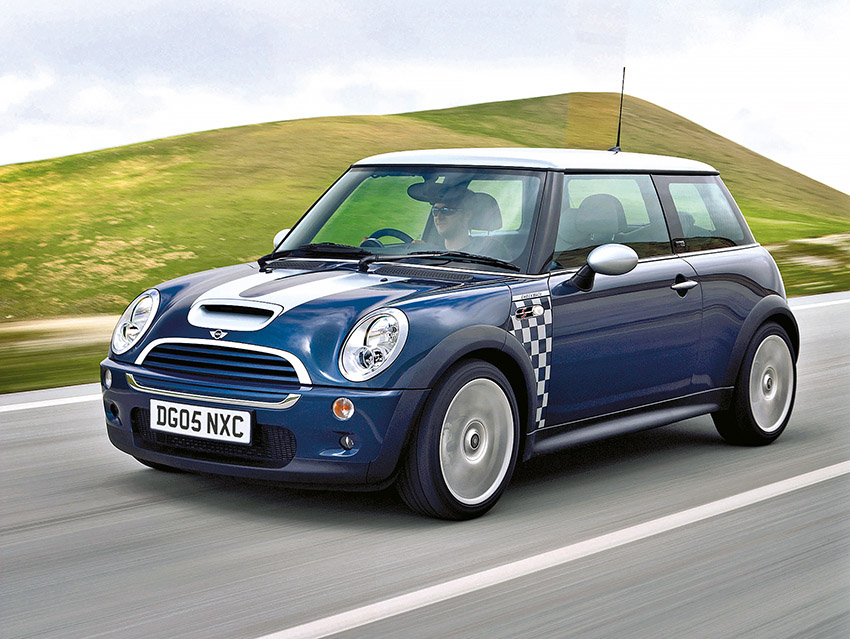With the Mini Cooper S R53 now in its Twenties, we take a look at everything you need to know before buying one of the best used cars on the market.
The launch of the ‘New’ R50 Mini in 2001, offered much for hot hatch enthusiasts. This included the sharp steering and playful chassis, but with just 120hp, this Mini had ‘warm’ rather than ‘hot’ performance. They shouldn’t have worried, as a faster version was always on the cards, and, sure enough, the performance headliner with one of the most iconic Classic Mini performance badges on the boot, Cooper S, was launched in March 2002 in the US, and June 2002 for the UK market.
Outside, BMW deliberately didn’t change Frank Stephenson’s attractive, 2000s redesign. The big giveaways were the letterbox vent on the bonnet, feeding air directly to the intercooler, and the Classic Mini-style center twin exhaust, with its two smaller Coke-can finishers. The only other style changes were the chunkier, more aggressive bumpers missing their chrome, plus different side skirts and a larger rear spoiler. Inside, the changes over an R50 Cooper were harder to spot, although there were welcome, more supportive standard sports seats.
Where the R53 Mini Cooper S gets most interesting is under the scooped bonnet. The addition of an Eaton supercharger and stronger Getrag six-speed manual gearbox to the 1.6-liter Tritec engine meant the Cooper S’s performance more than lived up to the pre-launch hype.
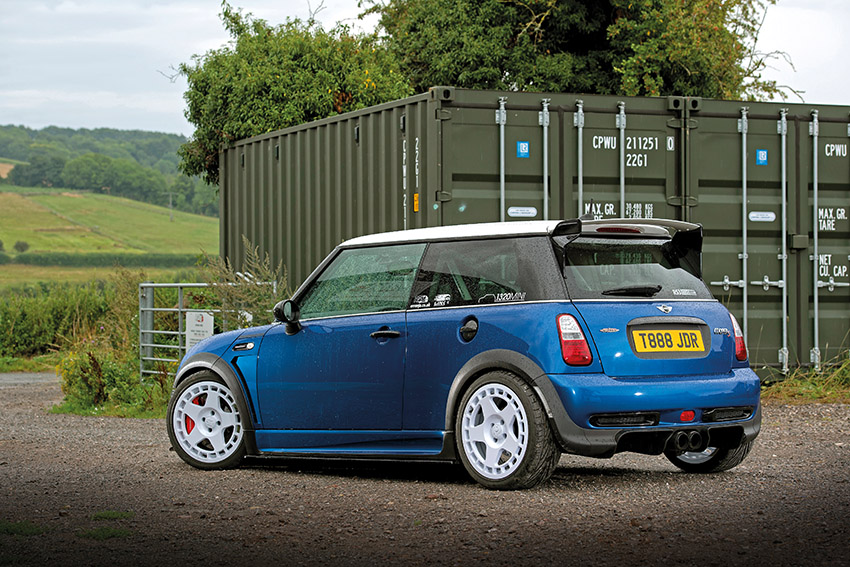
History Of The Mini Cooper S R53
In March 2002 (or June 2002, for the UK market), the performance range-topper, the Mini Cooper S R53 was launched. It had 163hp, 0-62mph acceleration in 7.4 seconds and a top speed of 133mph.
The JCW tuning kit for the Mini Cooper S R53 was released in March 2003 and took power up to 200hp. Costing just over $3,672/£3,000, the JCW kit consisted of a revised supercharger pulley, a gas-flowed and ported cylinder head, uprated spark plugs, a freer flowing exhaust system and a remapped ECU. The result was a 136mph top speed and 0-62mph acceleration in just 6.8 seconds. This kit came from Cooper’s East Preston home of the fast Mini and was officially sanctioned, meaning the warranty remained intact. Plus, it could be fitted to new or nearly new models at John Cooper Works or, more conveniently, a local Mini dealer. Towards the end of first-generation Mini production, the JCW kit was offered as a factory-fit option.
R53 LCI
Late 2004, the Mini got its mid-life or LCI (Life Cycle Impulse in BMW language) facelift, and the Cooper S R53 received a power hike to 170bhp, with 0-62mph acceleration dropping to just 7.0 seconds. This power increase for the standard S also meant an increase to the JCW kit, which now boasted 210bhp thanks to 380 injectors and a different airbox. A sought-after limited-slip differential was also available as an option.
An auto version of the R53 arrived in 2005, this is a proper six-speed torque converter gearbox with steering-wheel-mounted paddles.
The first-generation New MINI’s final hurrah, was the limited edition, hardcore two-seater GP. The GP is 50kg lighter, has a unique body kit, uprated JCW brakes, unique four-spoke alloys, is finished in Thunder blue with a Pure Silver roof and was assembled by legendary Italian coach builder – Bertone. Priced at £22,000, it was sold out before it even hit dealers and is already a sought-after collector’s item.
Production of the R50 and R53 MINIs eventually stopped in 2006, after 130,000 had been sold in the UK alone.
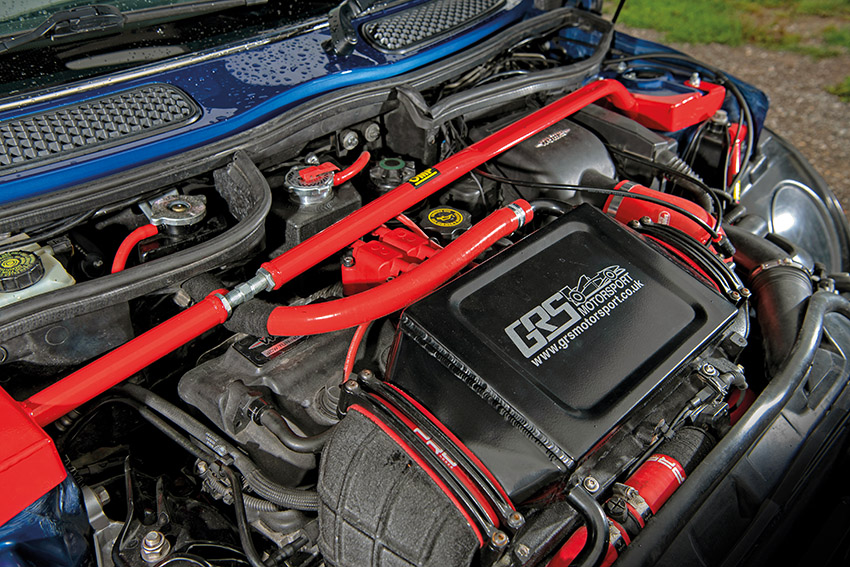
Mini Cooper S R53 model timeline
- March 2002: R53 Cooper S (165bhp) launched in the US.
- June 2002: R53 Cooper S (165bhp) launched in the UK.
- March 2003: Mini approved John Cooper Works (JCW) tuning kit offered for the R53 Cooper S.
- September 2004/April 2005: The R53 got its mid-life or LCI (Life Cycle Impulse in BMW language) facelift, it also got a power boost to 170bhp. JCW Cooper S tuning kit now has 210bhp. A limited-slip differential and proper six-speed automatic transmission were new options.
- July 2006 – limited edition, two-seat R53 GP released.
Differences between US and UK Minis
Apart from US spec front and rear wheel arch lights, there are no other bodywork changes between UK and US MINIs.
MC40 Monte Carlo Rallye Commemorative Edition launched in February 2004, and was limited to 1,000 individually numbered cars just for the US. Finished in Chili Red with a white roof, the MC40 was fitted with unique R90 17-inch split rim alloys finished in Anthracite, driving lamps, special red and black leather trim, and magnetic #37 door numbers.
Does the Mini Cooper S R53 have any engine issues?
The fitment of the supercharger adds welcome charisma to the durable and generally reliable Tritec engine, but there are still some areas to be aware of. Firstly, is there enough oil in it? The addition of that supercharger means this 1.6 will tend to drink a little more than usual, as much as 250ml per 1,000 miles. So, make sure you pull the dipstick and check there’s plenty of the black stuff. Then, start the engine and listen for a low-down rumbling – if you can hear this, it could mean the engine has been run low on oil at some point.
Elsewhere, oil leaks from the sump and oil filter are another sign of engine trouble. On top of the low-down rumble, with the engine running, listen for rattles at the top of the engine, which could be the result of the hydraulic tappets or the timing chain tensioner.
Other engine concerns are just about keeping it cool. Overheating is a common issue with the Mini Cooper S R53, as the main cooling fan’s thermostat can fail, stopping it from cutting in and ultimately leading to cracked cylinder heads.
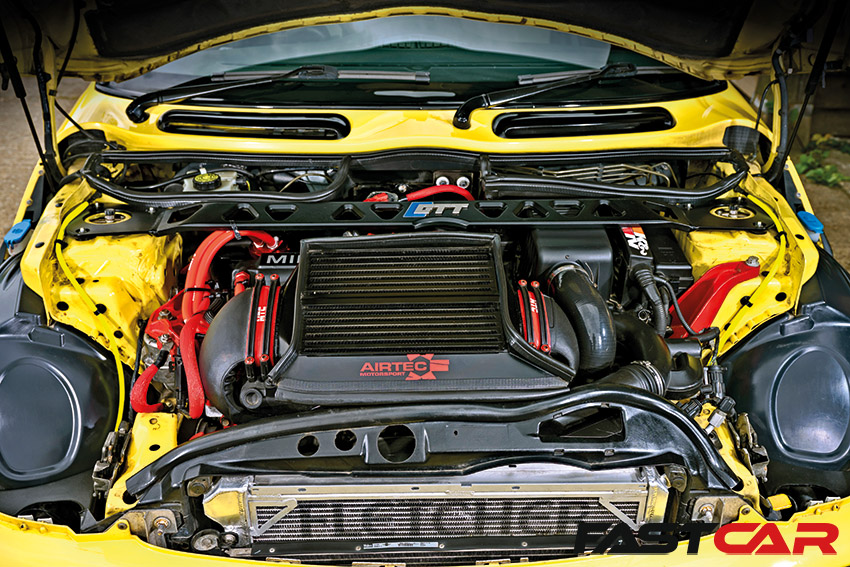
Mini R53 supercharger issues
The Cooper S’s Eaton M45 supercharger isn’t known to give trouble either, although check the condition of the drive belt, which can fail. Also, most R53 Cooper S’s have now covered over 100,000 miles, and if the supercharger hasn’t received a rebuild, it’s worth allowing for a rebuild from a specialist such as GT Tuning, when negotiating a price.
Suspension
Many Cooper S’s were fitted with standard run-flat tires, which make the ride hard – especially with the sports suspension. Thankfully, many owners will have removed them by now, but check the condition of the anti-roll bar links, bushes, and leaky shock absorbers.
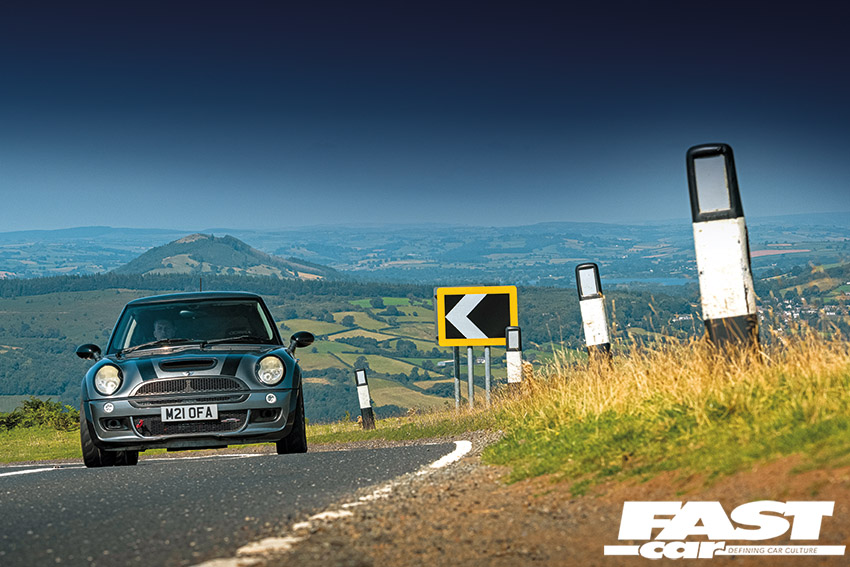
Transmission
The standard six-speed manual transmission was supplied by Getrag and is not known for problems – although the gears aren’t always easy to select, which is characteristic of this gearbox. Clutches on the other hand do wear, especially in tuned models. A clutch change is also a big job on an R53.
Any electrical issues on the Mini Cooper S R53?
Thankfully, the R53 Cooper S doesn’t suffer with the same electrical issues as the R50. However, make sure you still check for blown stereo speakers, slow electric window motors and failing central locking. These are all easy fixes, with affordable and readily available second-hand parts.
Bodywork
The earliest cars are over 21 years old, but still make sure you check the overall condition of the paintwork. The more upright nose is vulnerable to stone chips, as is the front bumper; also check to see if it’s loose and for grounding damage. Check the sides for parking dents (dents in the rear quarters are particularly hard to fix). Many R53s have already been modified, so check you’re happy with the modifications made and the standard of work done.
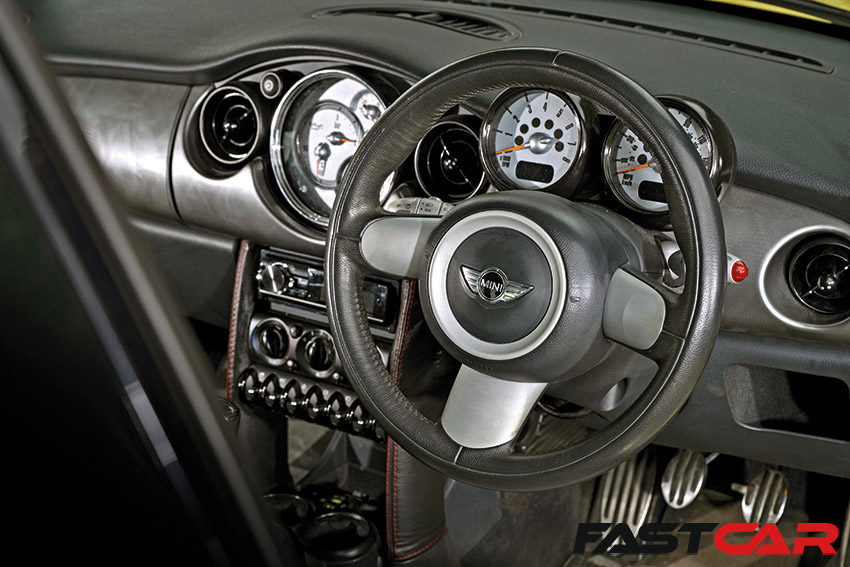
Common interior problems on the Mini R53
Inside, expect some wear and scuffing to the sport seats, some of the plastics too are easily marked. There have also been cases of the roof lining turning into a tent as the original fabric gives up.
Remember, R53s are now 20+ years old, so the interior does feel dated. Many owners will have opted to upgrade the stereo system, so make sure it works and that it was installed correctly.
Wheels
Are the alloy wheels badly curbed? Excessive damage could affect the wheel alignment. If they’re bad, it might be worth factoring into the price some four-wheel laser alignment.
Be sure to also check the condition of the tyres, especially on cars that have curbed wheels.
How much should I pay for an Mini Cooper S R53?
- $3,000 – $5,000: Earliest 2002 Cooper Ss start at $3,000, but these have high miles, and for a couple of thousand bucks more, later 2003 cars, with a clean title and plenty of extras can be yours.
- $5,000 – $8,000: Later 2004 pre-facelift cars start at around $5,000, plus highest mileage LCI facelift cars.
- $9,000 – $12,000: Here’s where you’ll find the latest 2006 model year LCI facelift Cooper S with around 90,000 miles. $10,000 bucks will get you into the highest mileage, US. only, MC40 limited edition hatch.
I spotted one low mileage GP1, with just under 20,000 miles, priced at over $49,900!
UK Prices
- £500 – £1,000: Here is where you find the cheapest R53s, these will be project cars, so expect non-runners or cars with issues.
- £1,000 – £3,000: The best 2003 and pre-facelift 2004 models are in this price band. Watch for cheaper, later categorized cars.
- £3,000 – £5,000: This where the best condition, lowest mileage, early cars, are at dealers. It is also where you find higher mileage, later cars.
- £4,000 – £6,000: The latest, highest specification and lowest mileage examples are in this price band at dealers.
- £15,000 – £18,000: Fastest and rarest Cooper S GPs start at around £15,000, with 100,000 miles. You will pay more for lower mileage examples.
Words: Martyn Collins (ex-editor of Modern Mini Magazine and author of New Mini).

